Abstract
In this paper, we address some of the statistical issues concerning false-positive rates that arise when the whole genome, or a portion thereof, is scanned in distantly related individuals, to search for a disease locus. We derive a method for correcting false-positive probabilities for the large number of comparisons that are performed when scanning a large portion of the genome. We consider both the idealized situation of a dense set of fully informative markers and the more realistic data-collection strategy of an initial scan at low resolution to identify promising areas, which then are typed with markers at high resolution. We also examine the accuracy of false-positive rates approximated using a conservative estimate of the separation distance between affected individuals in the current generation and the common ancestral couple. Calculation of false-positive rates when inbreeding is present in the pedigree also is considered.
Full text
PDF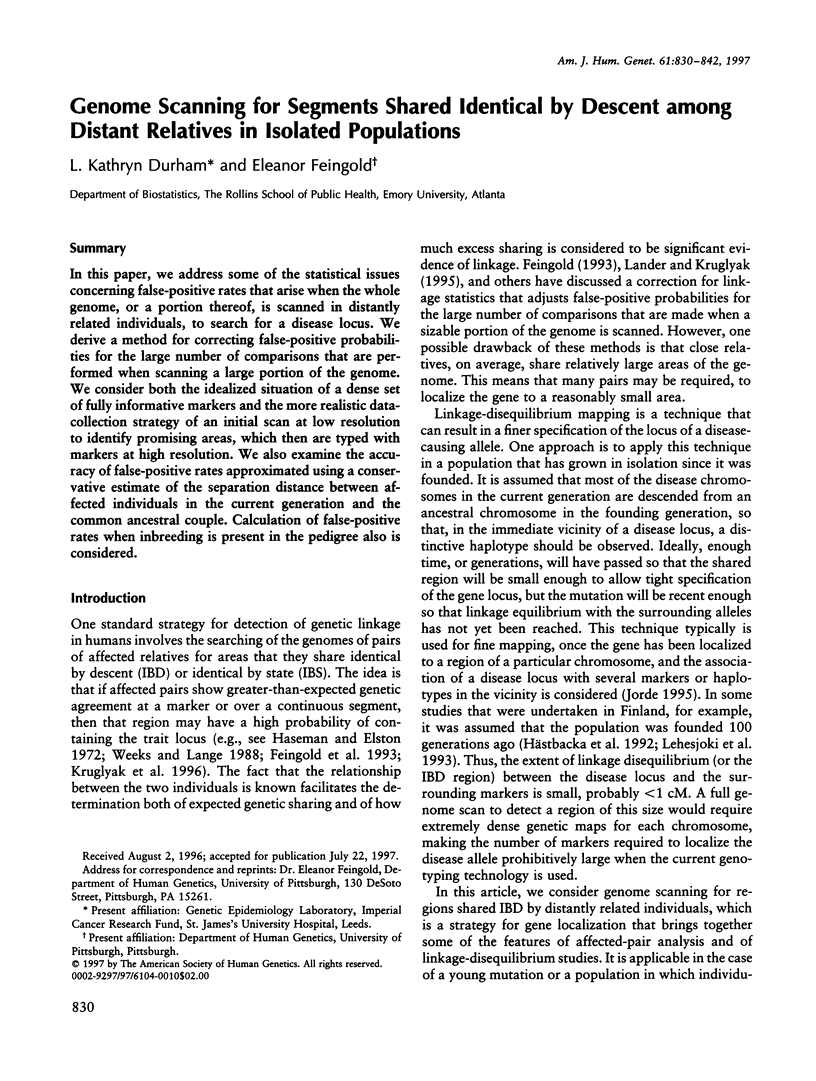
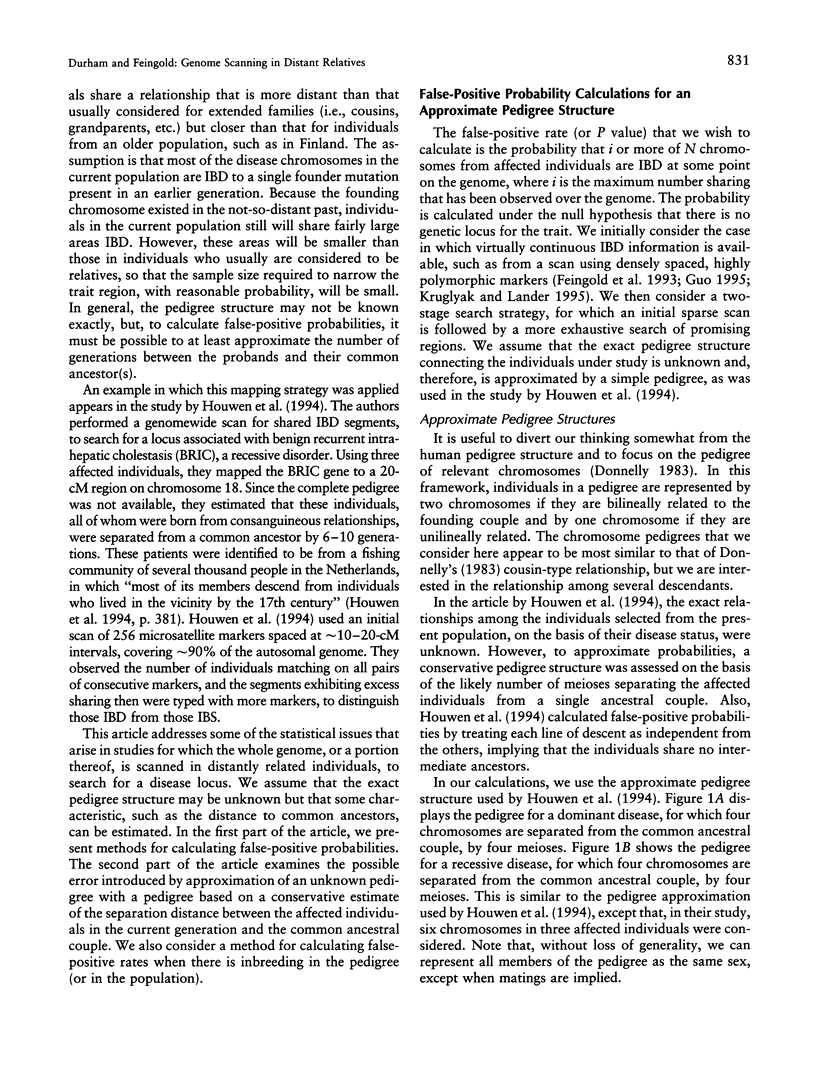
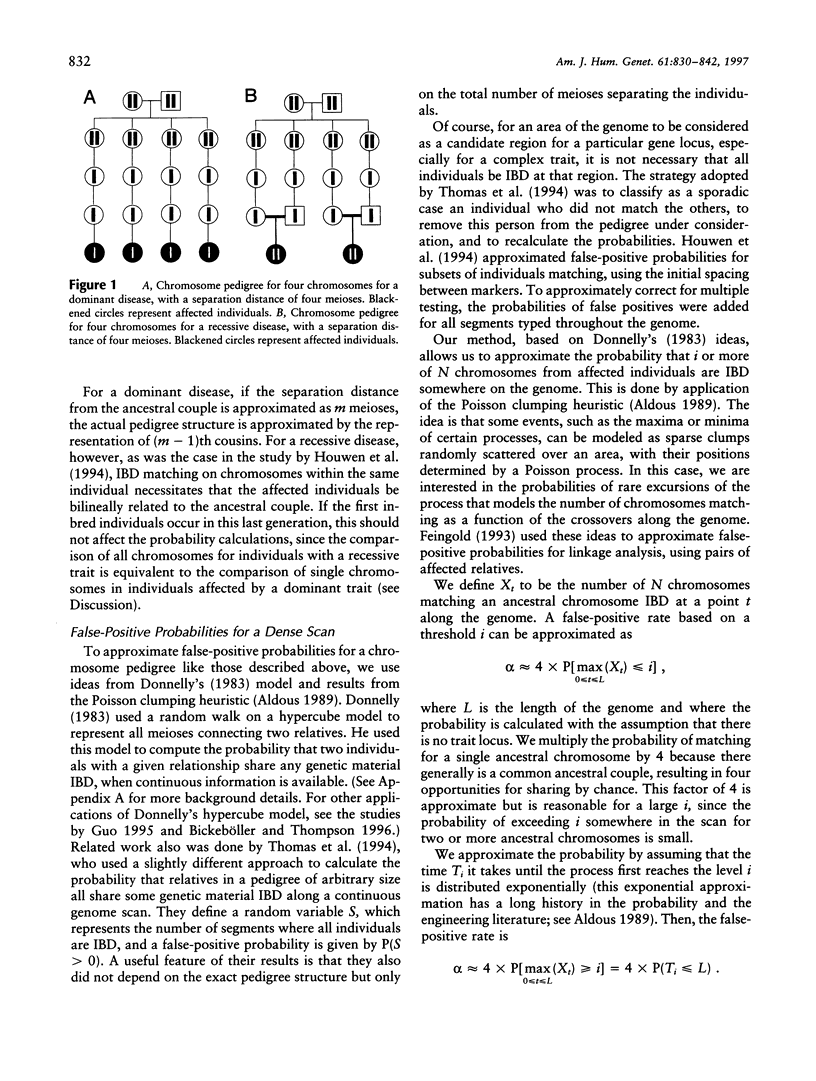
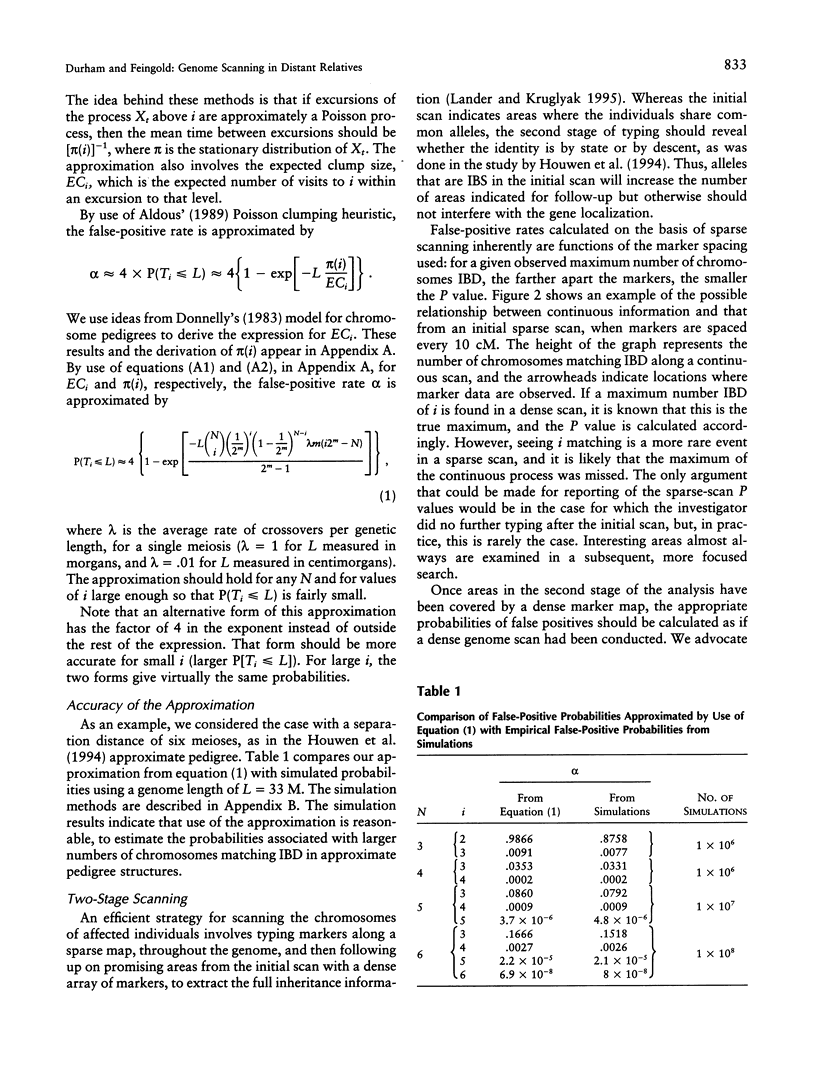
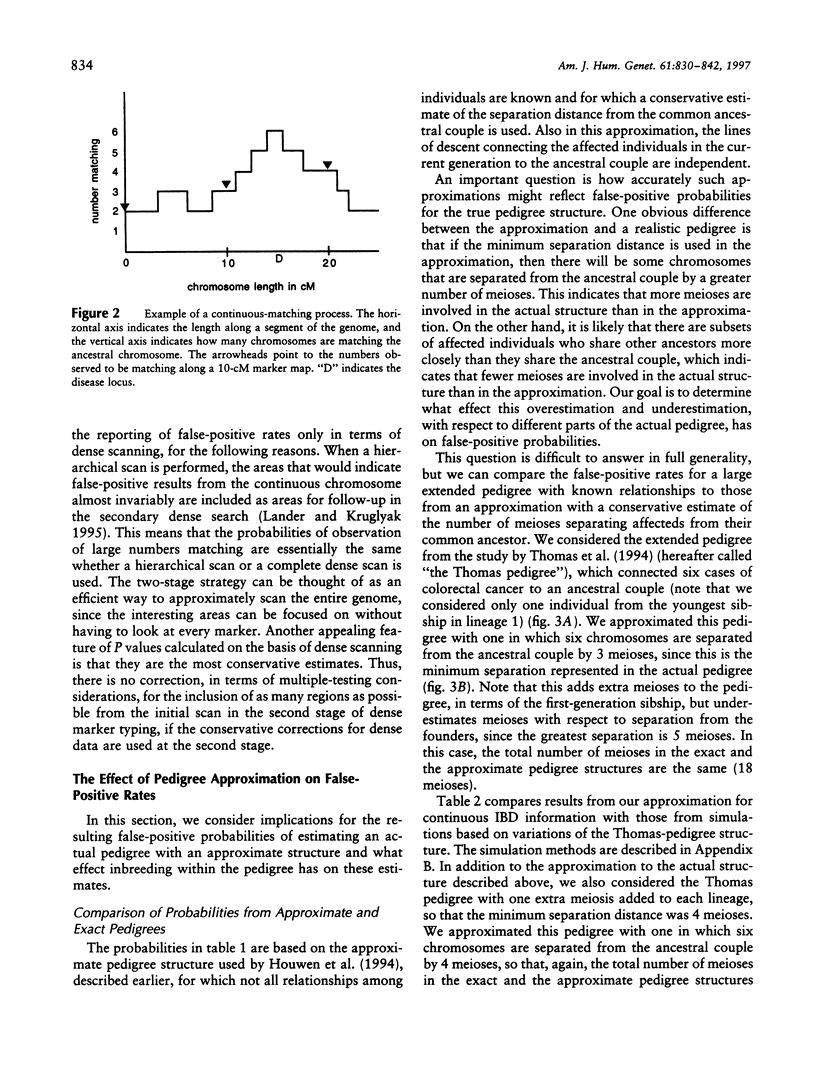
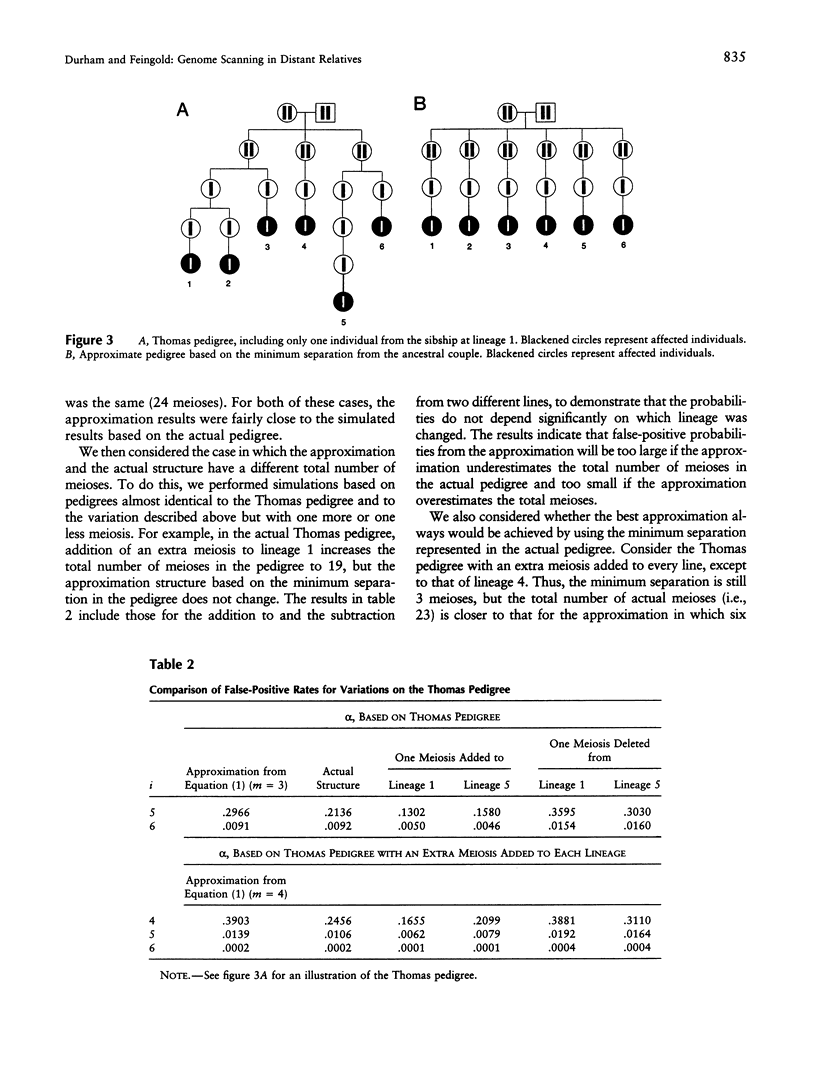
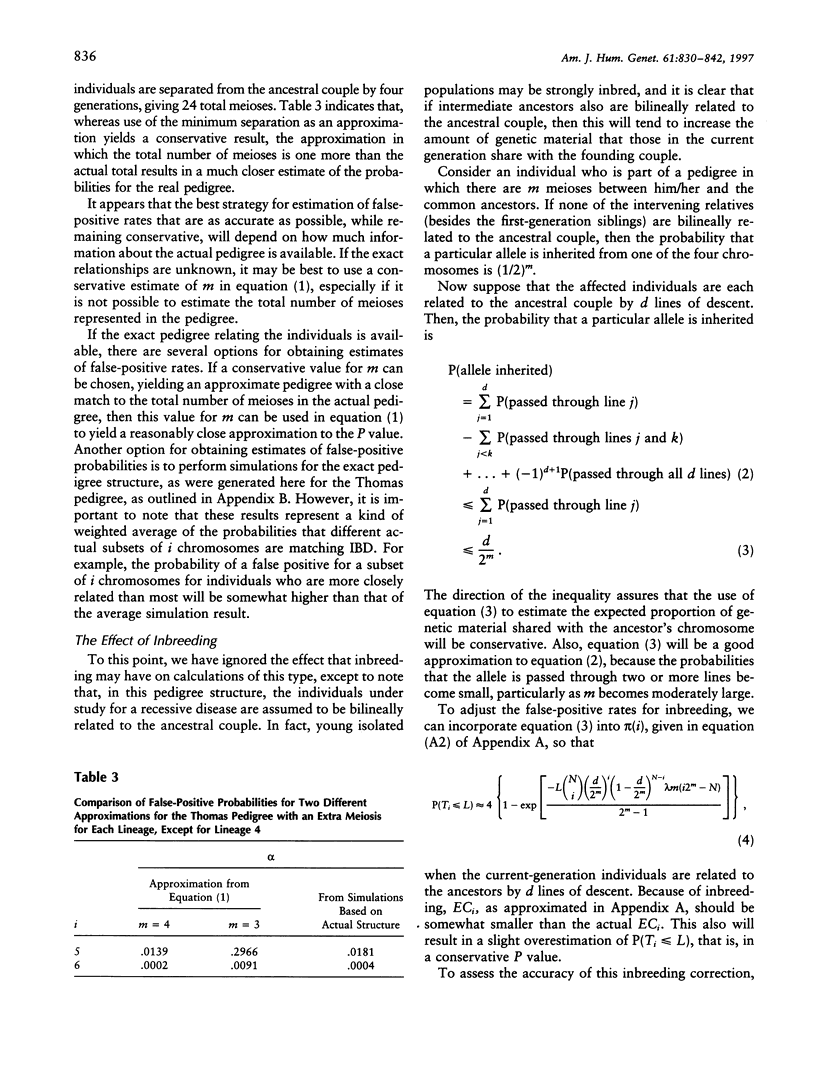
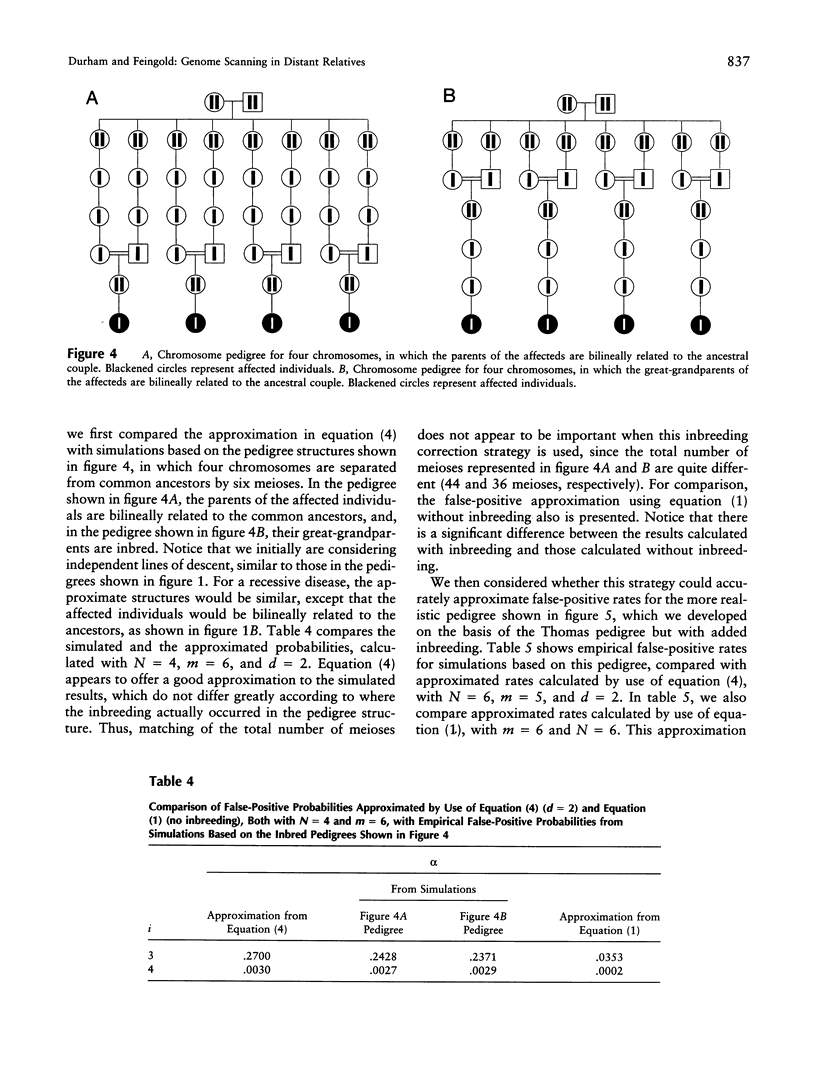
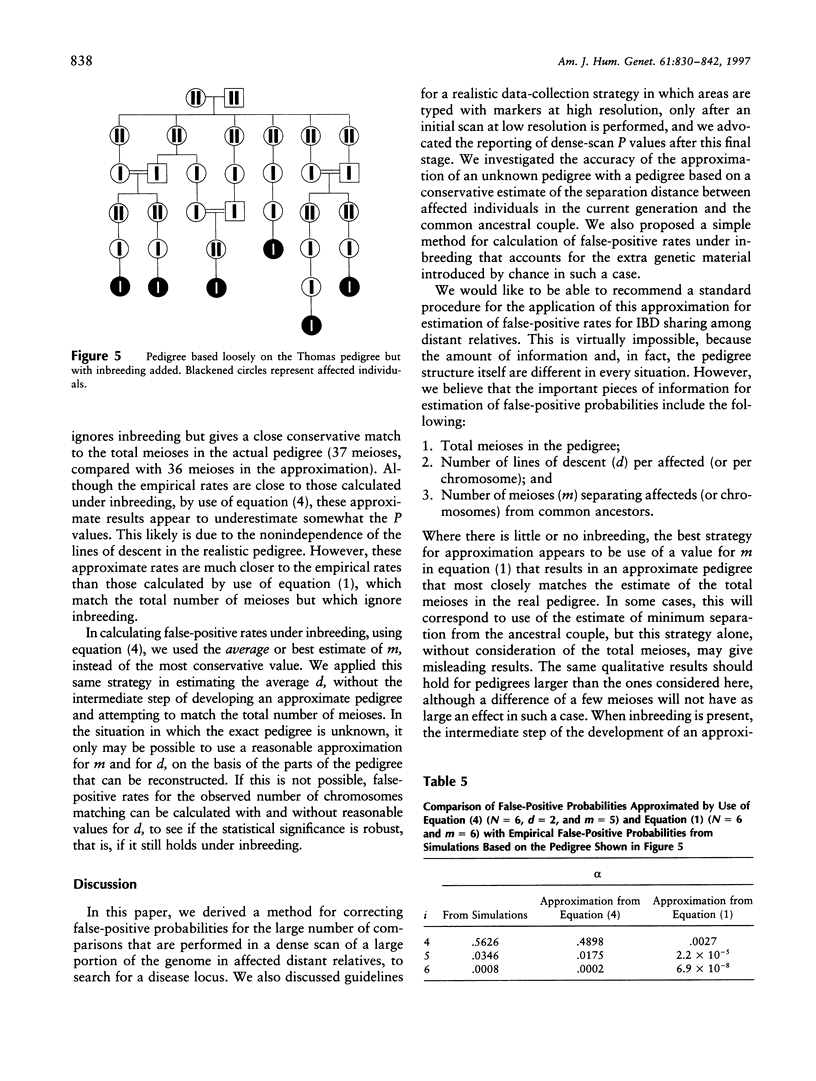
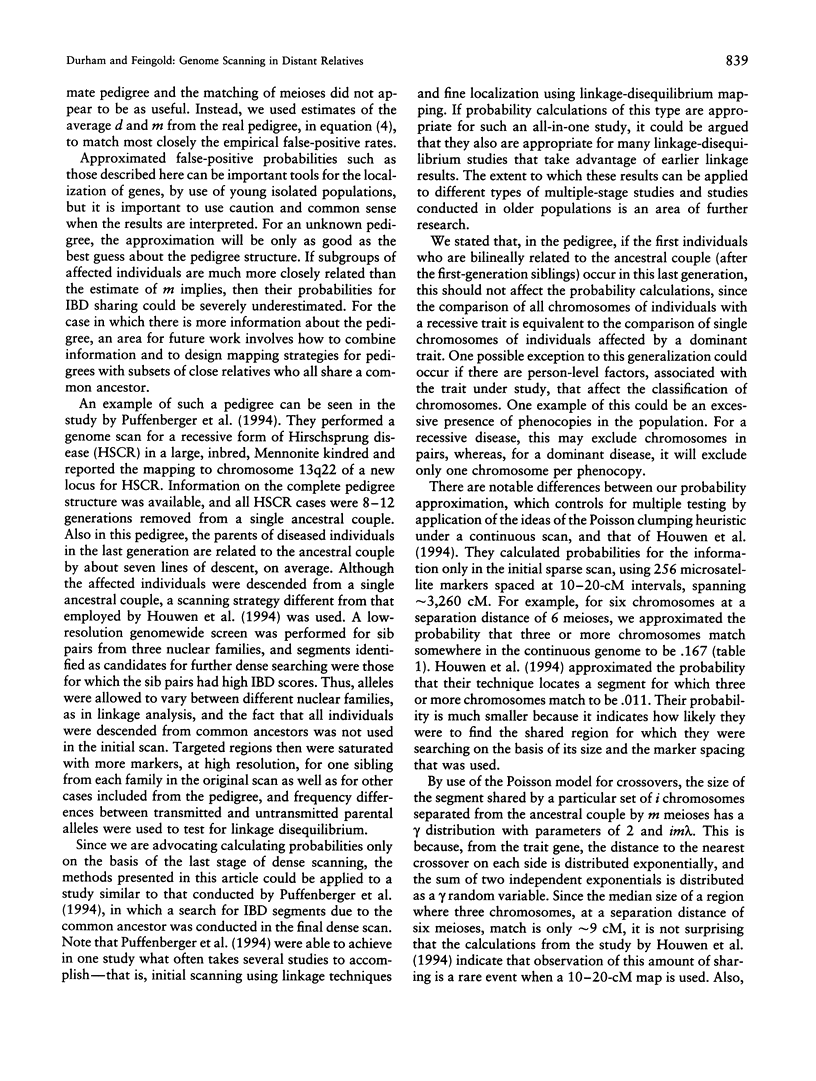
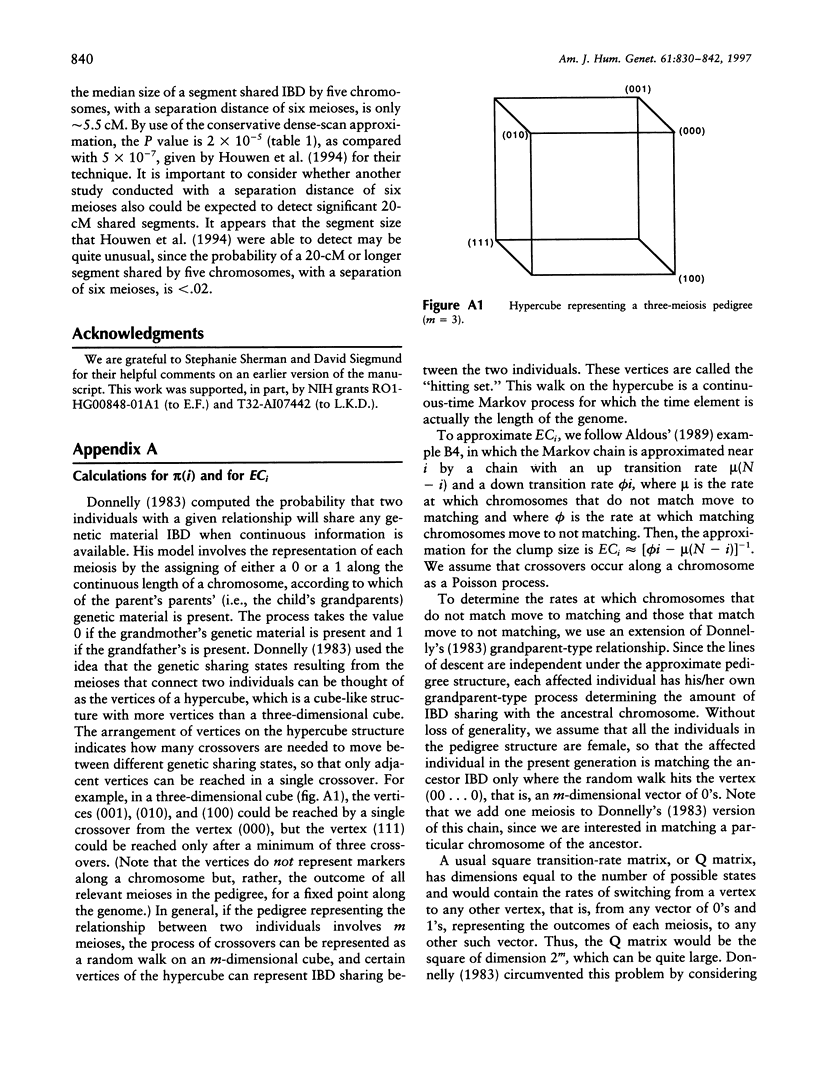
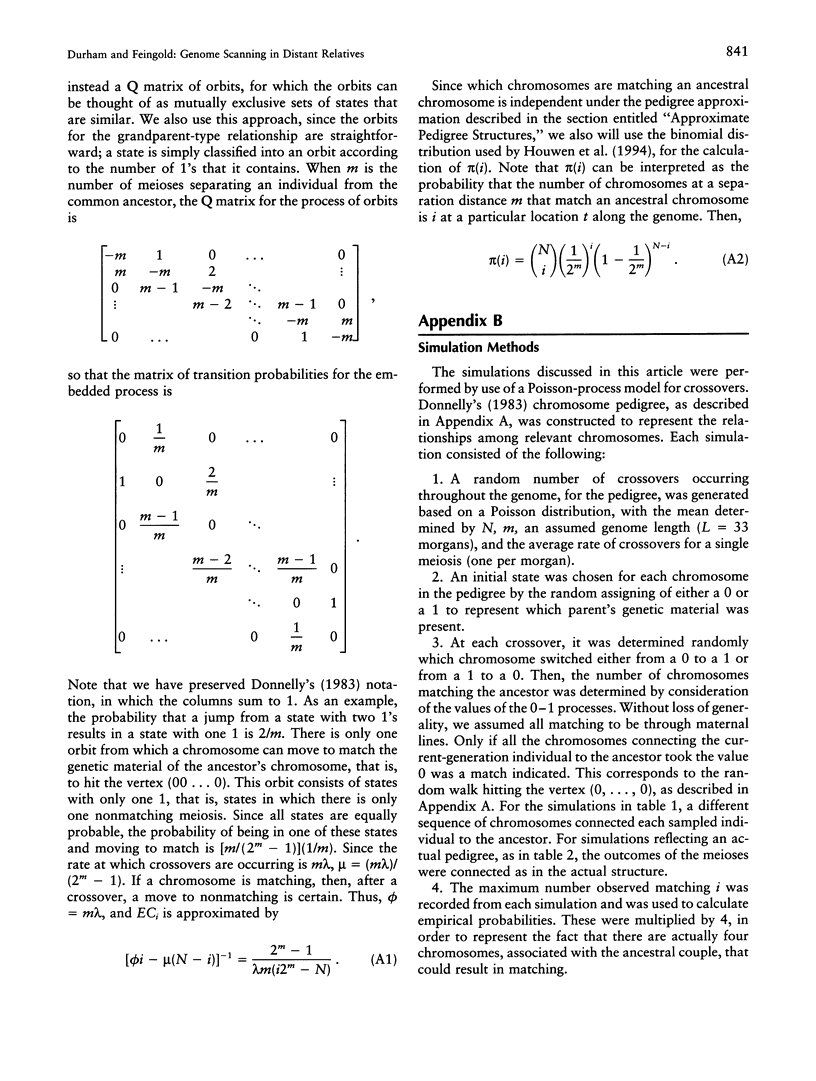
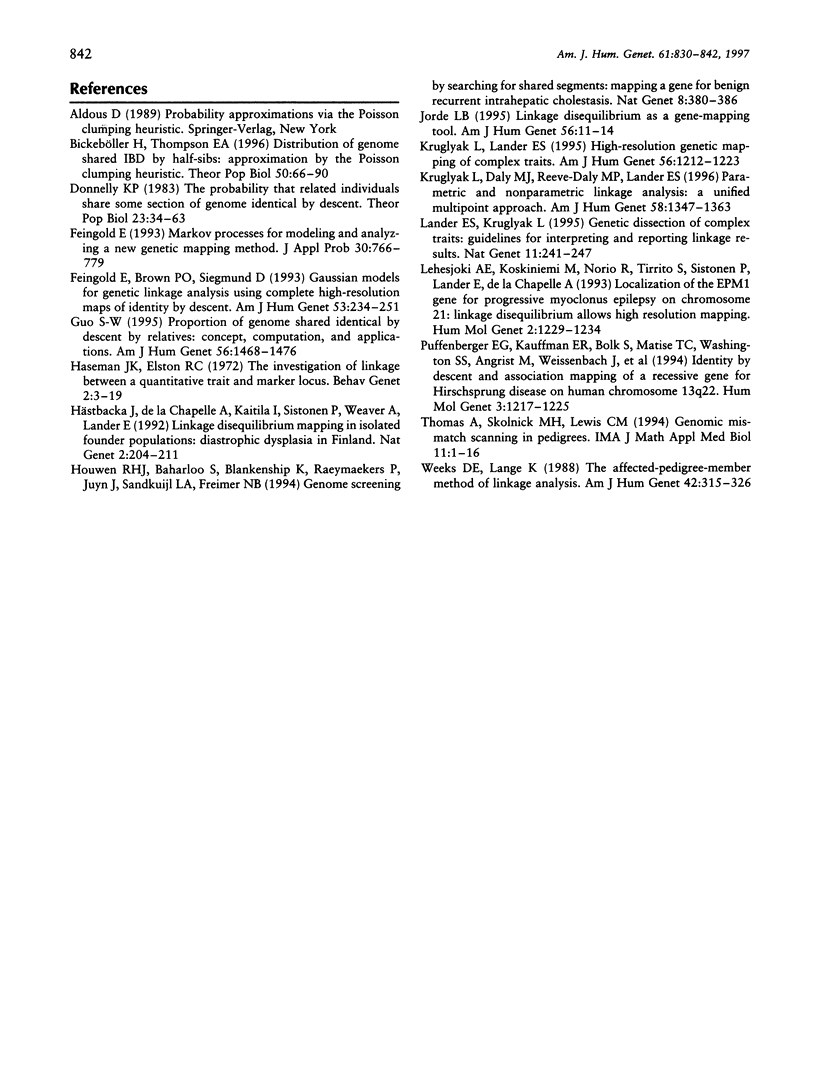
Selected References
These references are in PubMed. This may not be the complete list of references from this article.
- Donnelly K. P. The probability that related individuals share some section of genome identical by descent. Theor Popul Biol. 1983 Feb;23(1):34–63. doi: 10.1016/0040-5809(83)90004-7. [DOI] [PubMed] [Google Scholar]
- Feingold E., Brown P. O., Siegmund D. Gaussian models for genetic linkage analysis using complete high-resolution maps of identity by descent. Am J Hum Genet. 1993 Jul;53(1):234–251. [PMC free article] [PubMed] [Google Scholar]
- Guo S. W. Proportion of genome shared identical by descent by relatives: concept, computation, and applications. Am J Hum Genet. 1995 Jun;56(6):1468–1476. [PMC free article] [PubMed] [Google Scholar]
- Haseman J. K., Elston R. C. The investigation of linkage between a quantitative trait and a marker locus. Behav Genet. 1972 Mar;2(1):3–19. doi: 10.1007/BF01066731. [DOI] [PubMed] [Google Scholar]
- Houwen R. H., Baharloo S., Blankenship K., Raeymaekers P., Juyn J., Sandkuijl L. A., Freimer N. B. Genome screening by searching for shared segments: mapping a gene for benign recurrent intrahepatic cholestasis. Nat Genet. 1994 Dec;8(4):380–386. doi: 10.1038/ng1294-380. [DOI] [PubMed] [Google Scholar]
- Hästbacka J., de la Chapelle A., Kaitila I., Sistonen P., Weaver A., Lander E. Linkage disequilibrium mapping in isolated founder populations: diastrophic dysplasia in Finland. Nat Genet. 1992 Nov;2(3):204–211. doi: 10.1038/ng1192-204. [DOI] [PubMed] [Google Scholar]
- Jorde L. B. Linkage disequilibrium as a gene-mapping tool. Am J Hum Genet. 1995 Jan;56(1):11–14. [PMC free article] [PubMed] [Google Scholar]
- Kruglyak L., Daly M. J., Reeve-Daly M. P., Lander E. S. Parametric and nonparametric linkage analysis: a unified multipoint approach. Am J Hum Genet. 1996 Jun;58(6):1347–1363. [PMC free article] [PubMed] [Google Scholar]
- Kruglyak L., Lander E. S. High-resolution genetic mapping of complex traits. Am J Hum Genet. 1995 May;56(5):1212–1223. [PMC free article] [PubMed] [Google Scholar]
- Lander E., Kruglyak L. Genetic dissection of complex traits: guidelines for interpreting and reporting linkage results. Nat Genet. 1995 Nov;11(3):241–247. doi: 10.1038/ng1195-241. [DOI] [PubMed] [Google Scholar]
- Lehesjoki A. E., Koskiniemi M., Norio R., Tirrito S., Sistonen P., Lander E., de la Chapelle A. Localization of the EPM1 gene for progressive myoclonus epilepsy on chromosome 21: linkage disequilibrium allows high resolution mapping. Hum Mol Genet. 1993 Aug;2(8):1229–1234. doi: 10.1093/hmg/2.8.1229. [DOI] [PubMed] [Google Scholar]
- Puffenberger E. G., Kauffman E. R., Bolk S., Matise T. C., Washington S. S., Angrist M., Weissenbach J., Garver K. L., Mascari M., Ladda R. Identity-by-descent and association mapping of a recessive gene for Hirschsprung disease on human chromosome 13q22. Hum Mol Genet. 1994 Aug;3(8):1217–1225. doi: 10.1093/hmg/3.8.1217. [DOI] [PubMed] [Google Scholar]
- Thomas A., Skolnick M. H., Lewis C. M. Genomic mismatch scanning in pedigrees. IMA J Math Appl Med Biol. 1994;11(1):1–16. doi: 10.1093/imammb/11.1.1. [DOI] [PubMed] [Google Scholar]
- Weeks D. E., Lange K. The affected-pedigree-member method of linkage analysis. Am J Hum Genet. 1988 Feb;42(2):315–326. [PMC free article] [PubMed] [Google Scholar]


